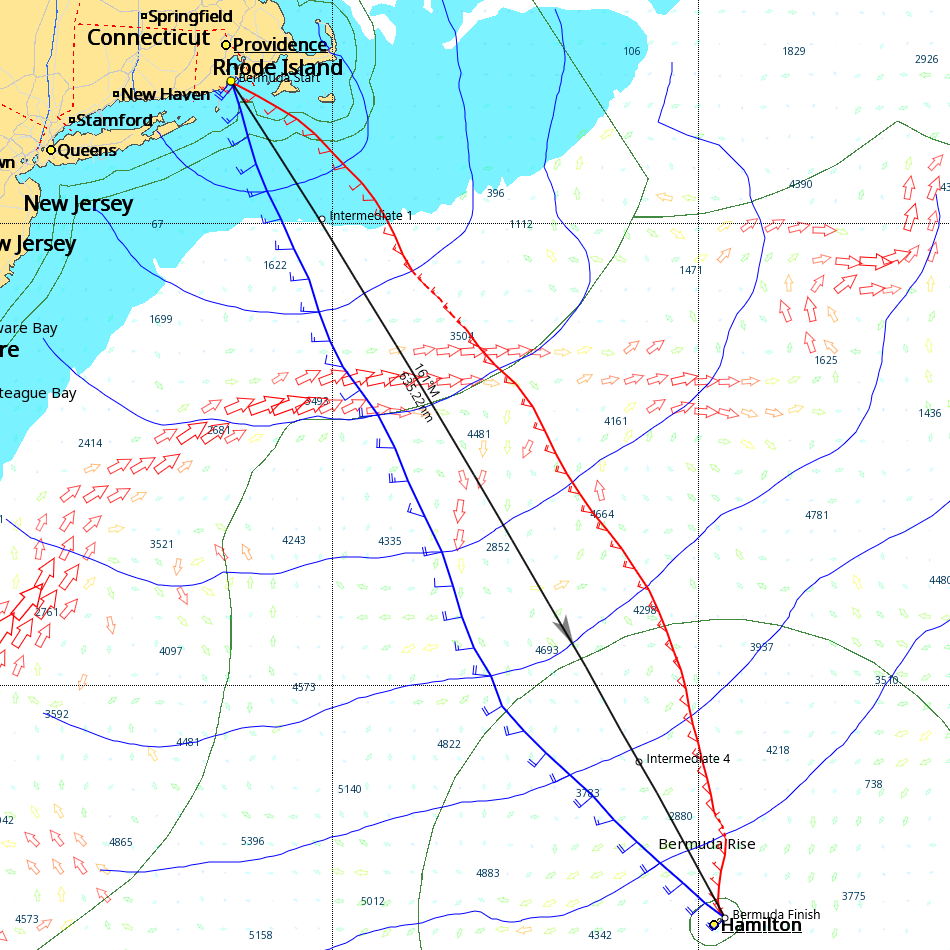F-TCF: Thoughts on the New Scoring System for the 2024 Bermuda Race

Every once in a while, something happens, and you wonder why it hadn’t come about earlier. Meet the new scoring approach of the upcoming edition of the Bermuda Race: F-TCF (Forecast – Time Correction Factor).
For decades, scientists and programmers have developed algorithms to rate different sailboats—the underlying idea has been to allow any well-sailed boat to be competitive, regardless of its vintage. Rules that favor fast and new boats have learned the hard way: Older boats aren’t competitive and this, over time, discourages them from participating. That’s not good for our sport.
While the existing rating rules (ORR, IRC, ORC, CRF) do a decent job on inshore courses, things look different for long-distance, offshore racing: When you can sail much faster than the rest of the fleet, you can exploit weather patterns that others can’t, and you end up sailing a different race. To get around this, race committees typically group boats of similar performance into various classes, ensuring similar boats compete against each other. The big fast boats tend to be in a division of their own and aren’t usually in the running for overall prizes.
With F-TCF, things might start to change. The concept behind this is a new scoring approach that’s simple and relies on technologies that have become mainstream. The idea is to use the large-scale weather forecast to predict, a few hours before the starting gun, how quickly each yacht should get to Bermuda. The rule calculates a time correction factor so that every yacht arrives simultaneously—in corrected time—if they were to sail to their performance polars and take the predicted optimal route.

There is nothing new about the elements that go into this new approach: VPPs (Velocity Prediction Programs) have been around for decades and are at the core of most modern rating rules. Routing software and easy access to weather GRIB files have also become mainstream. The trick was to combine these elements—which is where the magic lies for this approach. A typical Bermuda Race attracts close to 200 boats; so for this to work, the rating authority must calculate each boat’s optimal route a few hours before the race. According to Jim Teeters, Head of US Sailing’s Offshore Ratings Office, tasked with getting this to work, this should be done mostly automatically and take about two hours.
So why are we so impressed with this new approach?
- The approach is simple to understand and feels intuitive. That isn’t a technical feature, but it is, in my opinion, the key to any scoring system’s long-term success. PCS (Performance Curve Scoring), used in the 2022 edition of the Bermuda Race, attempted something similar, but to this day, I still need to look up how it works. Good luck explaining it to a non-tech-minded person.
- F-TCF is a natural extension for the VPP-based rules and doesn’t resort to simplifying a yacht’s performance to a small set of numbers. It uses all the data available—yacht measurements, wind, and current forecasts—to predict performance on a course.
- If it works correctly, it should allow boats to exploit parts of the racecourse better suited to their performance characteristics, while ensuring they aren’t getting a free ride to which others don’t have access.
- It lets all yachts know, before the race, their time correction factor so they can quickly calculate how much time they owe to, or are due from, their competitors.
Is this scoring system flawless? None is, and this one is no exception.
Predicting sailing performance as a science has come a long way, but it isn’t perfect. If the VPP over or under-predicts the performance of a yacht at a specific point of sail, and the racecourse favors those conditions, the error could be significant as it won’t get averaged out. Weather forecasts aren’t perfect, and small shifts in weather patterns can lead to dramatically different predicted routes. Navigators will need to spend more time analyzing GRIB files and routing options… Although isn’t that already the case?
We recently put together a study that modeled the 2022 race to understand the impact of the new rules. The most significant surprise was the difference between the winners’ actual route and the optimal route predicted by Expedition at the start of the race. That bodes well for sailors with a healthy skepticism of weather forecasts—you still need to make a judgment call. Relying only on the computer is unlikely to be a winning strategy.
Is this the new scoring system that will take over the world of yacht racing? The technical overhead required would make it difficult to justify when scoring short inshore races. And the quality of weather forecasts beyond 3-4 days is still not great, so any race longer than that would make predictions less meaningful.
But for this race? It feels like a great match. Let us know what you think.
